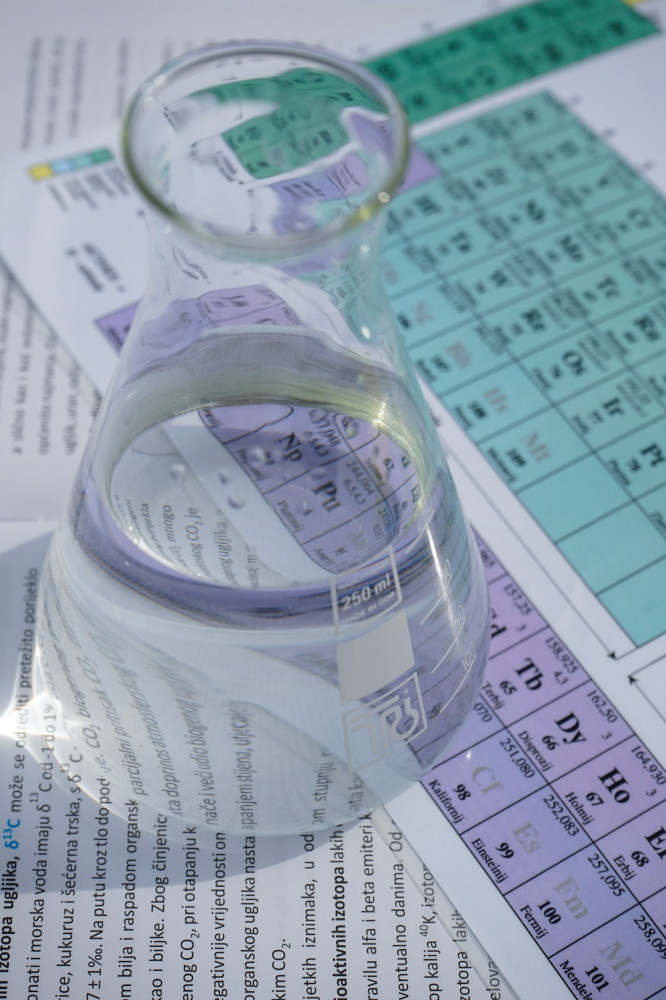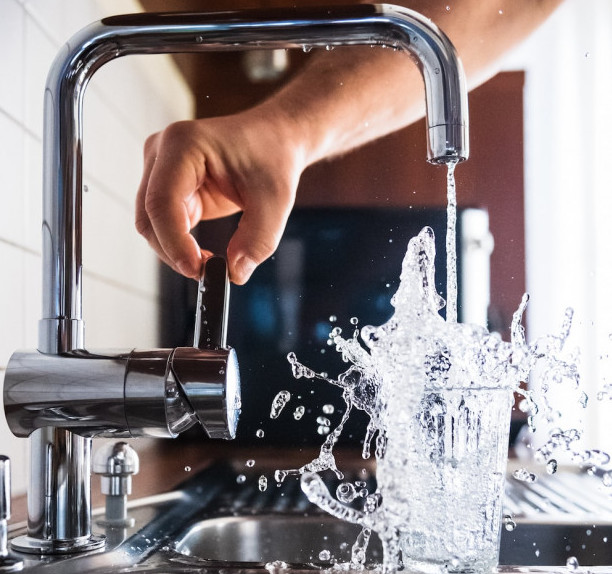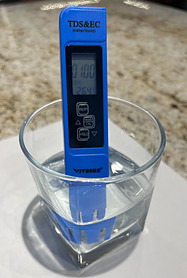What is TDS in drinking water? Is it an indication of water quality in drinking water? How is TDS measured and what are the acceptable limits in drinking water? How can I measure TDS in drinking water? How does it related to water hardness? How effective are water filtration systems in reducing TDS?
There is wealth of information on the topic of TDS in water, some of which is conflicting. I hope to consolidate this information in my research and present my clearly analysed responses to the aforementioned questions.
What is TDS in Drinking Water?
TDS translates into “Total dissolved solids”. It is a physical property of water representing the amount of dissolved organic and inorganic compounds that can pass through a 2-micrometer sieve. The concentration is expressed in PPM or mg/L.
The following dissolved solids can be present in your drinking water:
- Calcium
- Chloride
- Magnesium
- Potassium
- Zinc
- Aluminum
- Copper
- Lead
- Arsenic
- Iron
- Chlorine
- Sodium
- Fluoride
- Bicarbonates
- Sulfates
- Pesticides
- Herbicides

So TDS is the concentration of this amalgamated list of solids in drinking water but doesn’t provide the individual solids’ concentration some of which are more harmful than others. This said, TDS is a gauge of and is used by water treatment facilities to control the amount of total dissolved solids in water to levels deemed acceptable to humans by national/international health organizations.
Acceptable Levels of TDS in Drinking Water
Contrary to what you may have heard, TDS is not an indicator of drinking water quality simply because the make-up of the individual solids’ concentration is unknown. This said, there are guidelines set by world and individual government entities on the limits of TDS in drinking water. Generally speaking, entities such as the WHO (World Health Organization), EPA (US Environmental Protection Agency), BIS (Bureau of Indian Standards) and the CDW (Canadian Federal-Provincial-Territorial Committee on Drinking Water) agree that the TDS limits in drinking water should not exceed 500 mg/L. Increased levels of TDS will impact drinking water palatability and may result in excessive scaling in water pipes, water heaters, boilers and appliances.
Here is a table consolidating the information gathered from various sources on the effects of TDS levels on drinking water:
| TDS (PPM or mg/L) | Rating | Comment |
|---|---|---|
| 0-50 | Good | No taste, lacks essential minerals |
| 50-300 | Excellent | Ideal drinking water sweetspot |
| 300-600 | Good | Good for drinking water |
| 600-900 | Fair | Less acceptable drinking water, also results in excessive scaling in water pipes, water heaters, boilers and appliances. |
| 900-1200 | Poor | Least acceptable drinking water and should be avoided, also results in excessive scaling in water pipes, water heaters, boilers and appliances. |
| >1200 | Unacceptable | Water not acceptable for drinking. |
As a reference, consider the TDS in following available bottled water brands:
- Acqua Panna 188 mg/L
- Fiji 210 mg/L
- Evian 357 mg/L
- Perrier 475 mg/L
- VOSS 44 mg/L
- Nestle Pure Life 53 mg/L
- Dasani 28 mg/L
Measuring TDS in Drinking Water
Short of having a thorough water analysis from a professional, the easiest and most effective way of measuring TDS in water is by using a digital TDS meter. These are simple, inexpensive and easy to use devices which look something like this:
Fill a glass of water, switch on the meter, insert it in the glass and ensure that the water level doesn’t go over the immersion line and voila, you have a TDS reading on the device display. Typically, in addition to TDS, these devices also measure water temperature (in Fahrenheit or Celsius) and water conductivity (in us/cm).
There are multiple meters to select from but this is our pick from Amazon.
How TDS Relate to Water Hardness?
Unlike TDS water hardness is a chemical property of water. It specifically focuses on the amount of calcium and magnesium salts in the water in the form of bicarbonates, chlorides and sulphates. TDS is a superset of dissolved solids that includes and is not limited to calcium and magnesium salts in the water. Having said this, there is a relationship between the two; some have dared to establish a dividing factor from the TDS value to water hardness value of 10 with an acceptable margin of error. This is a rather crude estimation but if one is serious about measuring water hardness, they should use water hardness test strips available as a standalone kit or with drinking water test kits.
Water hardness does not impact the quality of drinking water. Hard water impacts the pipes, shower heads, sink faucet heads, clothes washers, dishwashers, coffee machines and other appliances using water with the buildup of calcium and other mineral deposits. It also will create little soap suds when cleaning. Vendors of water softeners (used of course to soften water) claim that using these appliances not only increase the efficiency of the appliances but also reduce the need for soap and detergent for cleaning. The sweet spot for water hardness lies between 60 mg/L to 120 mg/L ; this results in a balance between incrustation and palatable drinking water.
How effective are water filtration systems in reducing TDS?
Under sink water filtering system generally do not change the TDS. As explained here, these systems intended for potable water flowing to the water faucet are intended to reduce the handful of potentially harmful and/or causing distasting water parameters that will result in attaining or exceeding the quality of “bottled water”.
In general, your potable water will not exceed 500 PPM which is the recommended limit. However, if it does exceed the limit, consider using a Reverse Osmosis (RO) Filtration system which is considered to be a water purifier and will reduce the TDS. These are typically more expensive and are positioned at the point of entry into the home. RO systems can reduce the TDS by 95% but care should be taken to maintain the TDS levels between 50-300 PPM which is the sweet spot for drinking water.
Conclusion
I hope that this clarifies some of the confusion around TDS and its effect on drinking water. Should you have any questions related to this topic, I would be more than happy to respond any questions you post in the comments below.

